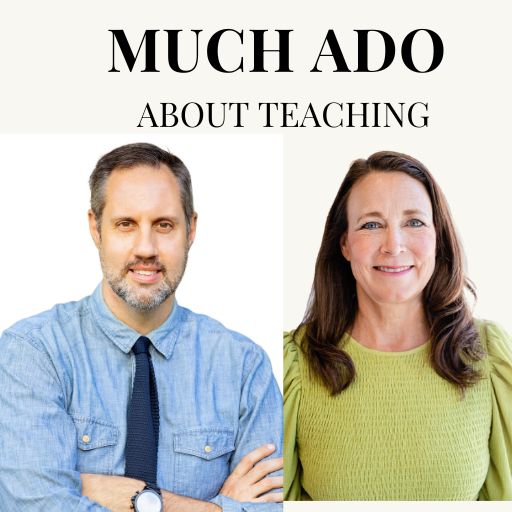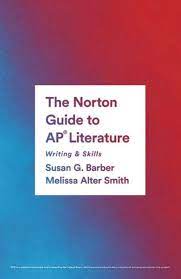I have a hard time saying no to things. Inevitably, this means that I volunteer, throw my name in the hay, and offer myself up when I should occasionally keep my mouth shut.
Consequently, I have to create systems that enable me to work efficiently and effectively.
Here are the five rules I am using to create a zen-like sense of simplicity to my teaching, and just like the rules of writing, these are not steadfast rules. They are meant to be broken every now and then.
1 CREATE RHYTHMS
I want my lessons to feel like a favorite song where you know all the lyrics and all the melodic entrances, and despite it familiarity and comfort it never becomes monotonous because the good parts are just so good.
My poetry lessons this month followed a similar format that was all captured in a repeatable slidedeck. It made the planning and execution easier, but it also gives me the means to be creative in the Write Nows and the fascinating stories about the poets. Here’s what it looked like:
Slide 1: Cover slide with the title of the lesson, the skill of the day, and a relevant image


Slide 2: The agenda for the lesson. I once learned that the trick to good public speaking is to tell your audience what you are going to cover, then cover it, and end by reminding them what you just covered.

Slide 3: A Write Now prompt. This is when I’m priming the pump. Students are thinking, reflecting, and writing on an idea that connects to the poem before they get to it. It also gives them the opportunity to think through the big ideas of life in an informal way. I wish I could structure an entire course on Write Now prompts and pair them with readings from classical and modern philosophy.

Slide 4: An image of the poet. Students need to see the people they are reading. Sometimes this image is accompanied by notes. Sometimes I tell an interesting story about the poet that captures their interest.

Slide 5: The poem. This is the bulk of the lesson. We annotate. We ask questions. We discuss. We share what we see. We find favorite lines. We work together and try not to reduce the poem down to a single meaning, but see all the wonderful ways in which it operates.
2 SERMONIZE
I spend the last 3-4 minutes of class sermonizing directly to my students. There is no fire and brimstone, but I use this time to speak directly to the importance of the day’s learning. I connect the skill of the day to broader ideas that transcend English and preside over all subjects. I explain why a centuries-old poem still needs to be read today. More than anything,I want them to know that our time together is valuable. The skill exists beyond a curriculum. The poem has a life beyond the classroom. These texts and these lessons are meaningful when we personalize their importance.
3 USE MINIMAL TECHNOLOGY
I believe in the power of technology to make our lives easier and more productive while connecting us in new and novel ways. Yet, each new technology comes at a cost. Often it is at the expense of time and attention, especially in the early stages. The time and attention needed to become comfortable with a tech tool is a luxury I cannot afford right now. Rather than feel overwhelmed by my clumsiness with something new, which my students will see, I am keeping things simple by using as few tech tools and apps as possible.
So what’s working for me?
The basics.
Students copy the notes into our systematized Google Doc notebook. I use Google Slides to create the day’s deck. And when we annotate and discuss, I’m at the SmartBoard circling and underlining, drawing arrows of connection and bracketing sections for isolation. But that’s about it. I don’t want to overwhelm my students or myself with too much stuff. I let the words of the poem speak. I let the stories of the poet tickle the fancy. I use the sermon to leave an impression. But most of all I’m trying to teach them that no tool or app can replace the magic that occurs when a teacher loves what he is teaching and tries to find the ways to show it an approachable way.
4 FOCUS ON RELATIONSHIPS AS MUCH AS SKILLS
While I am saying no to a lot of the smaller things that would bog down my school day, I am saying yes making time to listen to students. Research has shown that 40-60% of high school students feel disengaged during the school day — that was pre-pandemic. I can only imagine what it is like now. I’m using the little nooks and crannies within a period and the day to chat with kids, make connections beyond the curriculum, and give them the chance to speak about what’s going on in their lives. In doing so, I’m giving them the chance to be seen, feel heard, and understand that they matter.
5 SHOW GRATITUDE
Most Fridays I want to show gratitude for those doing the work that needs to be done. I pay-it-forward by anonymously recognizing the work of a colleague or a student through a hand-written note, a free coffee, or via a poem like “To Be of Use” placed in their mailbox. I am in such a rush to get to the weekend, this slows me down. It allows me to think reflectively about work that is admirable.
***
Simplifying my teaching to these five rules does not reduce my teaching. Nor does it lessen the experience for me or my students. Days can fill up so fast if there are no guidelines in place to maintain order among the chaos. By doing less, I am actually doing more. I’m focusing on what matters most.
What are the rules that are guiding your teaching now? I would love to hear what’s working for you in the comments below.
[mc4wp_form id=378]













3 comments
K
Love this post….I’ve moved from the hs level back down to the middle school level and I feel like format works for all levels. I would love to hear if you have a similar approach when working with longer works.
Cynthia B
Just came back from a staff development where we learned how to use and religiously follow a new textbook/curriculum that our district paid millions and millions for. All must use it: IB, AP, dual-credit, ELL.. One size fits all, dontcha know? Most don’t like it, most feel stifled, most want out. Your wise words hit home and cause me to mourn the idealist teacher who used to feel such was possible.
S
Love this — It gives me permission to use the same structure in lessons! Question though: What is the LIT annotation framework? (It’s mentioned in the agenda slide picture.) Thank you!